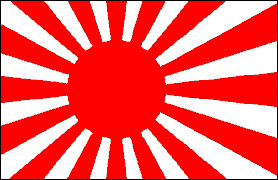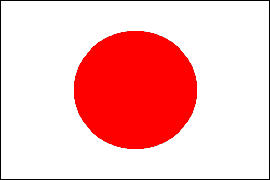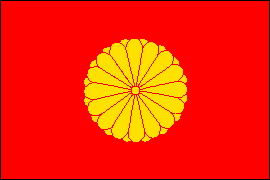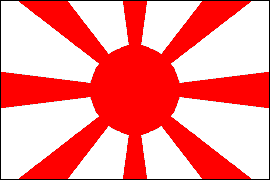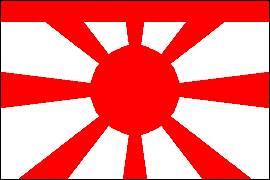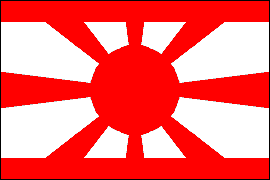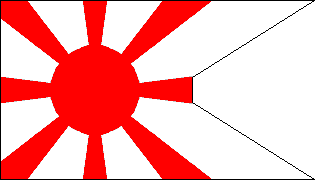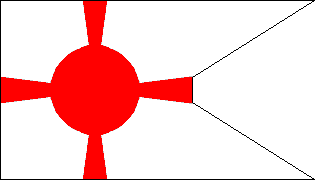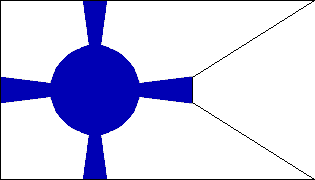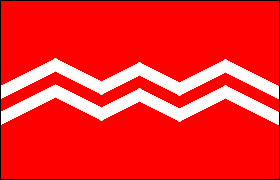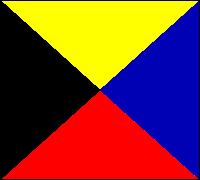EMPIRE OF JAPAN
NAVAL ENSIGNS & FLAGS • 1897-1945
The national flag of the Empire of Japan, known as the Hinomaru ("Sun Disc"), was adopted at the time of the Meiji Restoration. On its white field it bears the mon (heraldic badge) of the state, a scarlet sun. Though the flag was made official only in 1868, this mon had been the state symbol of Japan for centuries.
The national flag also served as the ensign of the Imperial Navy between 1872 and 1889, when a new ensign was adopted, with the sun offset toward the hoist and sixteen rays added. The Rising Sun Flag, as this ensign came to be called, was a naval flag only. (The Imperial Japanese Army used a similar but not identical design, with purple fringe, as a military color.) When the new ensign was adopted, the national flag was designated as the naval jack.
The Imperial Flag, used on land and at sea wherever the Emperor was present, bore his mon, a stylized golden yellow chrysanthemum, on a scarlet field. The flag of the Navy Minister originated as the first Japanese naval ensign of the modern era (in use 1871-72); in 1889 it became the Navy Minister's distinguishing flag. The emblem above the anchor is a stylized cherry blossom, Japan's national flower. The Imperial Navy's first rank flags were based on the national flag, but in 1897 new rank flags and command pennants patterned on the Rising Sun Flag were adopted, and these remained in use until the end of World War II.
Harbor guardships had a distinguishing flag with a red field and two white horizontal zigzag stripes. A plain red flag was flown by ammunition supply ships and also by other ships while loading or unloading ammunition.
The "Z" Flag was a signal flag of peculiar significance to the Imperial Navy. It was hoisted aboard the battleship Mikasa, flagship of Admiral Togo, just prior to the commencement of the Battle of Tsushima (27 May 1905), signaling to the fleet that "The fate of the Empire rests on the outcome of this battle. Let each man do his utmost." At Tsushima, the Japanese Navy scored a crushing victory over the Russian Baltic Fleet, which had steamed halfway around the world to redress the balance of naval power in the Russo-Japanese War. Admiral's Togo's signal passed into legend as the Japanese equivalent of Nelson's flag hoist at Trafalgar or John Paul Jones' defiant protest that "I have not yet begun to fight!" On the morning of December 7, 1941, Admiral Nagumo, commander of the Pearl Harbor strike force, hoisted the "Z" Flag aboard his flagship, the aircraft carrier Akagi—later sunk in the Battle of Midway. Togo's flagship Mikasa still exists, however, preserved as a memorial at Yokosuka, and still flies the "Z" Flag from her signal halyard.
Flag Proportions: Most Japanese naval flags had 2:3 proportions. The naval ensign, however, was slightly longer on the fly to permit proper positioning of the rays.
